Other names La DonaMaria Bonita Name Maria Felix Occupation Actresssinger Role Film actress | Years active 1942–1971 Height 1.75 m Partner(s) Antoine Tzapoff Children Enrique Alvarez Felix | |
 | ||
Full Name Maria de los Angeles Felix Guerena Spouse(s) Enrique Alvarez (1931–1938; divorced)Agustin Lara (1945–1947; divorced)Jorge Negrete (1952–1953; his death)Alex Berger (1956–1974; his death) Siblings Bernardo Felix, Pablo Felix Movies A Woman In Love, Dona Barbara, French Cancan, The Devil Is a Woman, Tizoc Similar People Jorge Negrete, Enrique Alvarez Felix, Dolores del Rio, Agustin Lara, Pedro Infante Died 8 April 2002 (aged 88), Mexico City, Mexico Resting place Panteón Francés de San Joaquín Website mariafelix.com Nationality Mexican Zodiac Sign Aries | ||
María Félix Google Doodle | Short Biography of María Félix
María de los Ángeles Félix Güereña ([maˈɾia ˈfeliks] (8 April 1914 – 8 April 2002) was a Mexican film actress and singer. She was considered one of the most important female figures of the Golden Age of Mexican cinema. She was also considered one of the most beautiful film actresses of her time, and one of the greatest erotic myths of the Spanish-language cinema. Along with Pedro Armendáriz and Dolores del Río, she was one of the most successful figures of the Latin American cinema in the 1940s and 1950s.
Contents
- Mara Flix Google Doodle Short Biography of Mara Flix
- Maria felix la leyenda primera parte
- Early life
- First years
- Europe
- Last films
- Failed projects in Hollywood
- Personal life
- In music art and fashion
- Death
- Discography
- Filmography
- References
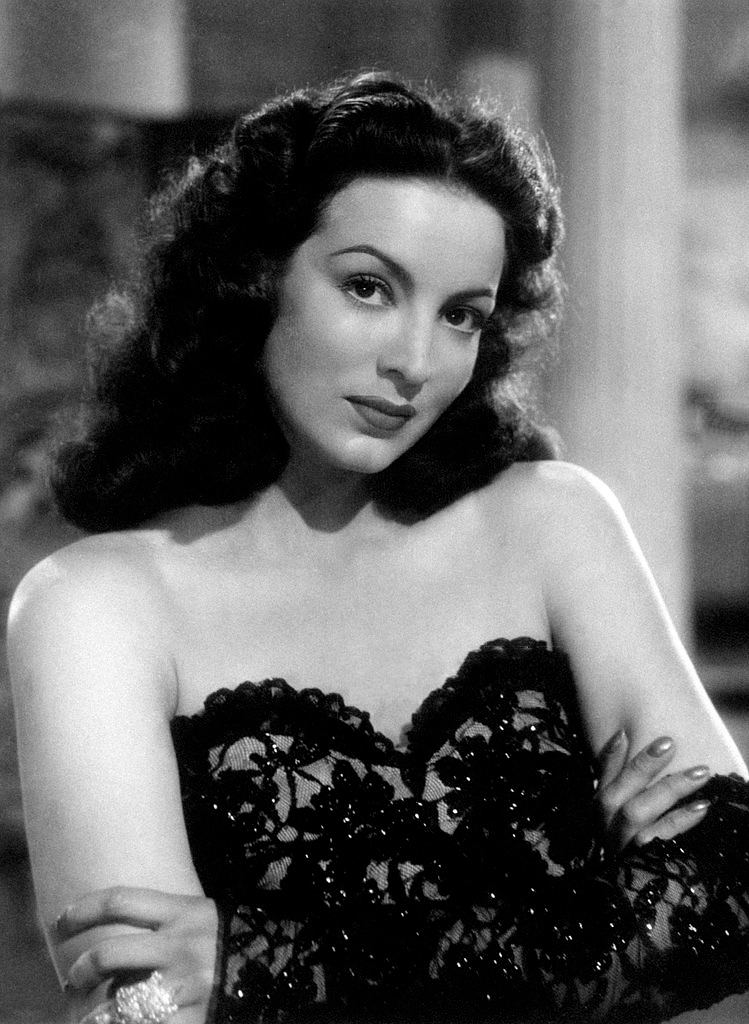
She was known as La Doña, a name derived from her character in the film Doña Bárbara (1943), and María Bonita, thanks to the anthem composed exclusively for her, as a wedding gift by her third husband, the Mexican composer Agustín Lara. She completed a film career that included 47 films made in Mexico, Spain, France, Italy and Argentina.
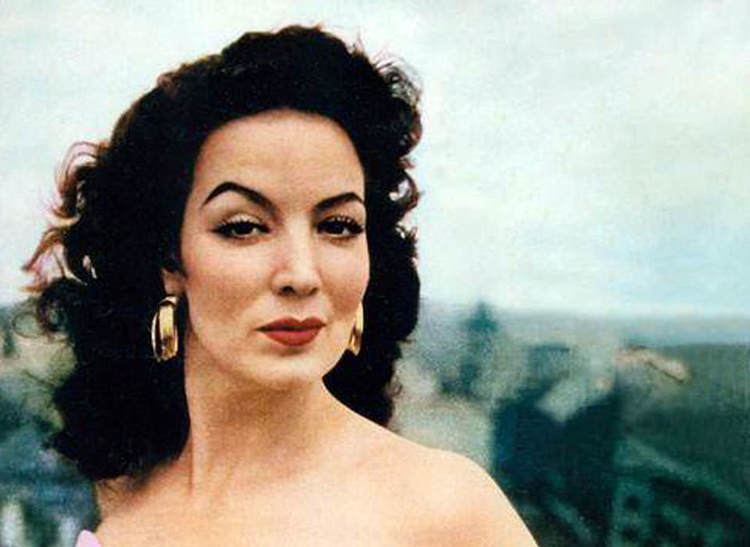
Maria felix la leyenda primera parte
Early life
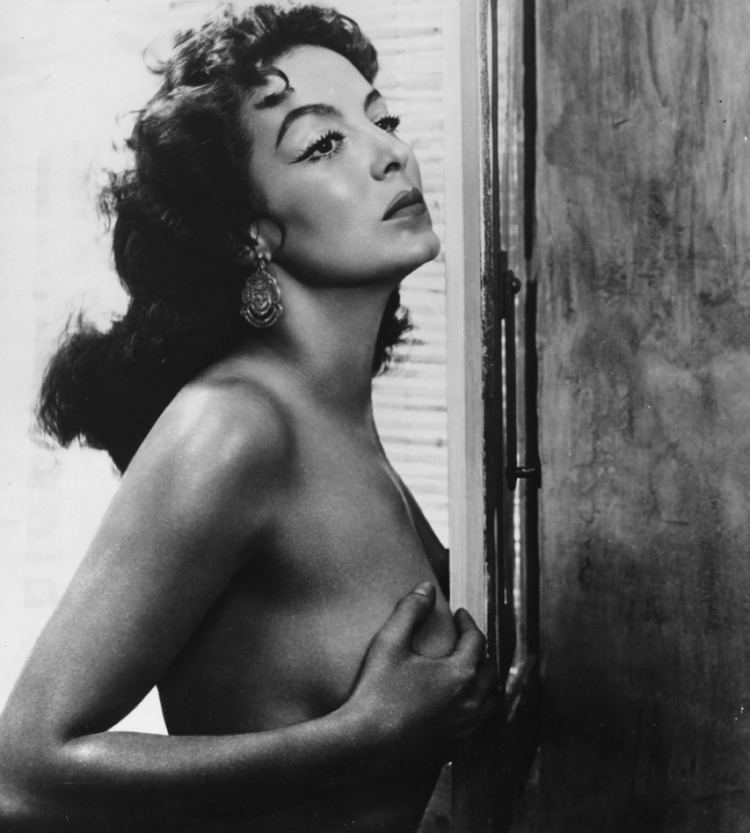
Maria de los Angeles Felix Güereña was born in Álamos, Sonora, México on 8 April 1914. She was the daughter of Bernardo Félix Flores, military officer and secretary of Hacienda. Her mother was Josefina Güereña Rosas, a Mexican of Basque ancestry. She had eleven siblings: Josefina, María de la Paz, Pablo, Bernardo, Miguel, Maria de las Mercedes, Fernando, Victoria Eugenia, Ricardo, Benjamin and Ana Maria del Sacramento.
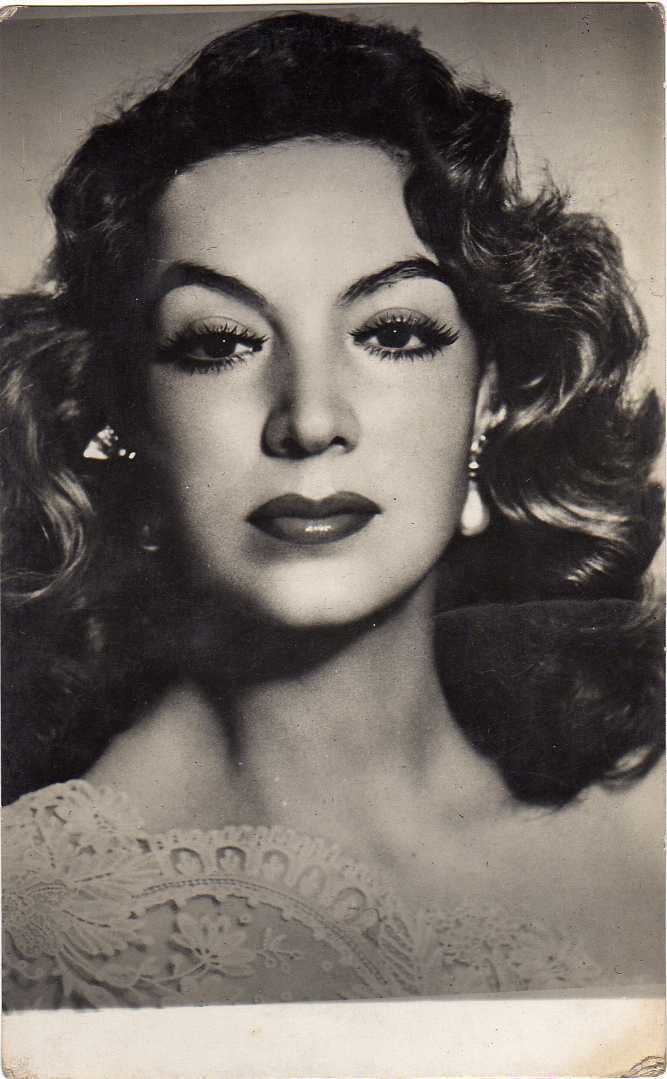
She spent her childhood in Álamos. The family lived with dignity, despite not being rich. During her childhood, she had a close relationship with her brother Pablo. Her mother separated the two siblings, thinking that they might be involved in an incestuous relationship. For that reason, Pablo was sent to the Colegio Militar, in Mexico City. When María was a young girl, she enjoyed games for boys and despised the dolls and other toys and activities "for girls". She was also an accomplished horse rider. She never had a good relationship with her other sisters, partly because of their physical differences (all her sisters were blond by maternal inheritance), and also because of María's strong personality.
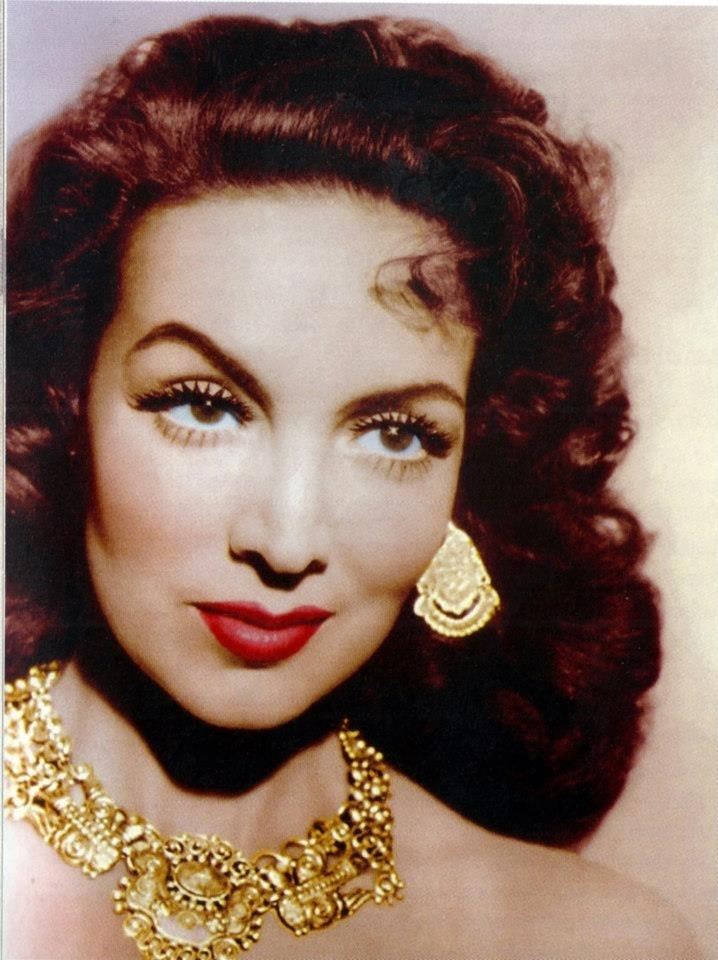
Later, the Félix family moved to Guadalajara. When María was a teenager, her beauty soon began to attract attention. She was crowned Beauty Queen at the University of Guadalajara. It was at this time that she met Enrique Álvarez Alatorre, a salesman for the cosmetics firm Max Factor. After a brief romance, the couple married in 1931. In 1935, María gave birth to her only child, Enrique, nicknamed Quique. However, her marriage with Alvarez was unsuccessful and the couple divorced in 1937. After her divorce, María returned to Guadalajara with her family, where she was the subject of gossip and rumors due to her status as a divorceé. Because of this situation, María decided to move to Mexico City with her son.
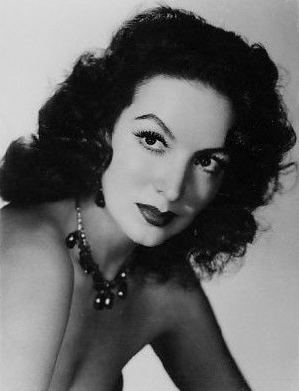
In Mexico City, she worked as a receptionist in a plastic surgeon's office, and lived in a guest house. One day, the father of her son visited the child, and deliberately refused to give the boy back to his mother. Álvarez took the child to Guadalajara. Maria's son was later regained with the help of Agustin Lara, her second husband. They planned an elaborate recovery that tricked the grandmother and took the child.
First years

One afternoon after work when walking down the street in Mexico City a director and filmmaker Fernando Palacios approached her asking if she wanted to make movies. Her response was:
"When I want to, it will be through the big door."

Palacios finally persuaded her to break into the movies. Becoming her Pygmalion, he began to train her and present her in film circles. She made her first appearance in the "White and Black Ballroom" of the Mexico City's Country Club where some of the great Mexican movie stars of the era (Esther Fernández, Lupe Vélez, Andrea Palma) gathered. Eventually she was taken to Hollywood, to the Metro-Goldwyn-Mayer Studios. There, she met Cecil B. DeMille, who offered to launch her film career in Hollywood, but María was not interested . She preferred to begin her career in her own country. Finally, thanks to Palacios, she was offered the female lead role in a film by Grovas Productions: El Peñón de las Ánimas, directed by Miguel Zacarías.
In the film El Peñón de las Ánimas, María starred opposite the popular Mexican actor and singer Jorge Negrete. Maria Felix and Jorge Negrete got off to a bad relationship during the filming because he had asked that his girlfriend, the actress Gloria Marín, be given the lead role. For this reason the filming of the movie was difficult and led to a direct confrontation between Félix and Negrete. That confrontation helped to cement the reputation of Félix as a tough and arrogant woman.
In her second film, Maria Eugenia, Maria would be wrongly projected in a role out of her temperamental film personality. However, the film is remembered as the only movie where María appeared in swimwear. The same happened with the film La china poblana (1943), where María claimed to have paid a debt of gratitude to her discoverer Fernando Palacios, who directed the film. Nobody has heard from this movie (the second color film of the Mexican cinema), so it is considered lost. She called both films "her beginner sins".
Maria Félix was known as La Doña for her role in the movie Doña Bárbara (1943), based on the same name novel of the Venezuelan writer Rómulo Gallegos. For the film, another actress (Isabela Corona) was already hired, but when Gallegos first saw María, he was charmed by her and said: Here is my Doña Bárbara!. This movie was filmed in Venezuela with Mexican and Venezuelan actors. Doña Bárbara was to be the start of her major collaborations with the Mexican film director Fernando de Fuentes. Félix and de Fuentes filmed together another two films: La Mujer sin Alma (1944) and La Devoradora (1946). As María Félix herself said, "With these films, I became the number one enemy of the Mexican family morals."
Somehow, I seduced the public, even those who criticize the conduct of my characters in the films. My legend began to take shape without moving a finger. The public imagination did everything for me.
Without her stereotyped role of a "femme fatale", María Félix filmed two sophisticated films:El monje blanco (1945) directed by Julio Bracho and Vertigo (1946) directed by Antonio Momplet. Both characters required a great dramatic intensity.
Under the direction of the famous Mexican film director Emilio Fernández, María Félix made three successful films: Enamorada (1946 ), Rio Escondido (1947) and Maclovia (1948). The relationship between María and Fernandez was cordial and smooth, despite the strong and famous temperament of the film director. In Enamorada, María Félix found her perfect film partner, the actor Pedro Armendáriz. The films of María Félix with Fernandez and his team (The writer Mauricio Magdaleno, the photographer Gabriel Figueroa and Armendáriz) had strong presence in several international film festivals. In turn, they gave María Félix her first Ariel Award for Enamorada and Río Escondido.
Among the films with Fernández, Maria Félix also worked with Roberto Gavaldón, another director who showcased some of her best performances. Their first collaboration was in La diosa arrodillada (1947) with Arturo de Córdova. Thanks to these films, María Félix's fame crossed the Atlantic.
In 1948 she was contracted by the Spanish film producer Cesreo Gonzalez. In this manner Maria Félix began her film adventure in Europe. In Mexico she only acted in the film Doña Diabla (1949) and would not return to film until 1952.
Europe
María debuted in the European cinema in Spain, with the film Mare Nostrum (1948), directed by Rafael Gil. With Gil as director, she realized another two films in 1950: Una mujer cualquiera and La noche del sábado. In 1951, she filmed the French-Spanish production La Couronne Noire directed by Luis Saslavsky based on a story by Jean Cocteau. She debuted in Italy with the film Incantesimo Tragico (1951). In the same year, she filmed Messalina (1951), directed by Carmine Gallone (at the time, the most expensive film of the Italian cinema). During the filming of this movie María suffered an emotional shock: her father died of a heart attack in Navojoa.
In 1952, Maria travels to Argentina, where she filmed La pasión desnuda of the Argentine filmmaker Luis César Amadori. In the same year María returned to Mexico. She concluded her working relationship with Cesáreo González with the film Camelia, filmed in her native country. Her stay in México was mainly based on her marriage to the actor and singer Jorge Negrete (her former film rival), and with whom she filmed El rapto, directed by Emilio Fernández, Negrete's last film.
After the death of Jorge Negrete, on 5 December 1953, María returned to Europe. In France she made the films La Belle Otero (1954 ), and Les Heros sont Fatigues (1955), alongside Yves Montand. However, the most important film of María in this period was French Cancan (1954) directed by Jean Renoir with the legendary French actor Jean Gabin. Her last film shot entirely in Europe was the Spanish film Faustina.
Last films
María returned to Mexico in 1955. This period of her career was characterized by performing acclimated films inspired in the Mexican Revolution. This cycle begins with La Escondida (1955). In this film, as well in stories like Canasta de cuentos mexicanos (1955) and Café Colón (1958), she worked again with Pedro Armendáriz. In 1956 she stars Tizoc (1956) with the popular Mexican actor and singer Pedro Infante. However, the film was not liked by the actress, despite her international success. Eventually she filmed Beyond All Limits (1957) with Jack Palance, and the melodramas Miércoles de ceniza (1958) and The Empty Star (1958). In 1959 she filmed La Cucaracha, where alternating with Dolores del Río, another celebrated Mexican film star with a career in Hollywood. In 1959 she performs the Spanish-Mexican co-production Sonatas directed by Juan Antonio Bardem and the French-Mexican co-production La Fievre Monte El Pao, directed by Luis Buñuel.
In the 1960s María's presence in the cinema is limited to only a few films. The most prominent were Juana Gallo (1960), La bandida (1962), sapho '63, (1963) (the only film where she made a partial nude), and La Valentina (1966). In 1970 she films La Generala, which would be her last film. The Mexican historical telenovela La Constitucion (1971) would be her last professional acting job.
Maria attempted to return to the cinema twice. First, in 1982, with the film Toña Machetes, and again in 1986 with the film Insolito resplandor. Neither project crystallized, and María never reappeared in film.
Failed projects in Hollywood
Almost from the beginning of her career, María received job offers in Hollywood. But María herself said: They only give me huehuenche (Indian) roles. While she was in France, Hollywood offered her the female role of Duel in the Sun, but she passed and the part went to Jennifer Jones.
Another proposal was The Barefoot Contessa, but she refused to perform in France La Belle Otero. Ava Gardner ended up with the part.
Later, the director Robert Aldrich sent her the script of The Legend of Lylah Clare, but she did not reach an agreement with the director and Kim Novak got the role.
Personal life
María was married four times. Her first marriage (1931–1938) was with the cosmetics sales agent Enrique Alvarez Alatorre. María herself came to say that her first marriage meant to her freedom, leaving her house where she was prey. Soon, due to jealousy of her husband, María felt sick and started divorce proceedings. He fathered with her only son, the also actor Enrique Álvarez Félix. In a visit to the child when he lived with his mother in Mexico City, Alvarez refused to return her and took it with him to Guadalajara. María was able to recover her son years later with the help of her second husband, Agustin Lara.
María's relationship with her son was distant in his early years, because she sent him for many years to schools abroad "to discipline". Years later, Enrique returned to Mexico and decided to start a career as an actor in film and television. With regard to her son, María went on to comment: Enrique is a very gifted, with admirable common sense man. He's my best friend. I have so much fun with him. He's not a "mama's boy" as many believe. Self-employed, fight like being independent. He has his own career, his audience, his poster and assumes his responsibilities without relying on me. The unexpected death of Enrique as a result of a heart attack in 1996, plunged María into deep sadness, although in public she always showed great fortitude.
Her second marriage (1945–1947) was with the famous Mexican composer Agustín Lara. María was a fan of Lara since her adolescence. They met accidentally and unfriendly in a phone booth on the street. Some time later, they were formally introduced by a mutual friend, the actor Tito Novaro. From that time the couple began a highly publicized relationship, which culminated in marriage in 1945. Lara immortalized María in a huge number of songs, such as Humo en los ojos (Smoke in the eyes), Cuando vuelvas (When you come back), Dos puñales (Two daggers), Madrid and especially the famous theme Maria Bonita, composed in Acapulco during their honeymoon. Maria Bonita will become one of the most popular Lara songs worldwide. However, excessive jealousy of Lara ended their relationship in 1947. María herself said in a fit of violent jealousy, Lara even tried to kill her. The separation was imminent.
After her second divorce, Maria lived romances as some notorious men like the Mexican aviation entrepreneur Jorge Pasquel, the Spanish bullfighter Luis Miguel Dominguín and the Argentine actor Carlos Thompson. María and Thompson on the verge of reaching the altar, but at the last moment María repented.
In 1953, when María returned to Mexico after her stay in Europe and Argentina, she was reunited with an "old enemy": the actor and singer Jorge Negrete. Unlike their difficult first meeting ten years ago on the set of El peñón de las ánimas, María found Negrete, in her own words: "surrendered to my feets". After a brief romance, the couple married in 1953, in a tumultuous ceremony, transmitted by radio to all Latin America, held at the House of Catipoato in Tlalpan owned by María. Unfortunately. Negrete was already ill when the marriage took place. Negrete died eleven months after at a hospital in Los Angeles, California, while María was in Europe shooting La Belle Otero. María's appearance at his funeral dressed in trousers, caused a huge scandal, which led María to take refuge in Europe.
During her stay in France, María met, through the painter Leonor Fini, the French writer Jean Cau, assistant of the writer Jean Paul Sartre. With Cau, María also lived a famous romance.
Her fourth marriage (1956–1974), was with the Romanian-born, French banker Alexander Berger. Maria met Berger in the 1940s, but then both were married. Years later they met again. María remained married 18 years with Berger. She tried becoming a mother again, but an accident during a filming in 1957, caused that María lost the child. Berger died in 1974 as a result of lung cancer just months after the death of the mother of Marìa, which plunged her into a deep depression. But she decided to emerge triumphant and take a new passion: The horses. Some of her horses wins major international equestrian awards. María kept her horses for 11 years.
Her last romantic relationship was the Russian-French painter Antoine Tzapoff. About him, María said: I don't know if he's the man who has most loved me, but he's who has loved me better.
The press speculated a strong rivalry between María and Dolores del Río, the other leading female figure of Mexican cinema and a successful Hollywood star. About this "rivalry" Maria Felix, said in her autobiography in 1993: With Dolores I had no rivalry. On the contrary, we were friends and always treat each other with great respect, each with their own personality. We were completely different. She was refined, interesting, gentle on the deal, and I'm energetic, arrogant and bossy.
In music, art and fashion
During her life, María was a model for many renowned painters. In her adolescence she was painted in Guadalajara by Jose Clemente Orozco, but María said: He paint me like a make-up skull. María met the famous Mexican artist Diego Rivera during the filming of Río Escondido (1947). Maria locked solid friendship with him and his wife, Frida Kahlo. Rivera was madly in love with her, but without hope. In 1949, Rivera painted a portrait of her, which Félix classified as "muy malo" ("very bad"). The portrait was originally intended to première in a retrospective on Rivera's work, but Félix did not allow the painting to be displayed, as she disliked it; she reportedly eventually sold it.
Other renowned artists who recorded María in his canvases were Leonor Fini, Leonora Carrington, Remedios Varo and Bridget Tichenor among others. In the 1980s, the Russian-French artist Antoine Tzapoff (María's last partner), captured her in a numerous portraits.
Maria also had dealings with numerous Mexican and foreign writers and playwrights some of whom have dedicated several novels. Among them they are Renato Leduc, Xavier Villaurrutia, Salvador Novo, Pita Amor, Jean Cocteau and Octavio Paz. Luis Spota was inspired by her life for his novel The Empty Star even Maria starred in the film version in 1958. Carlos Fuentes did the same in the novel Zona sagrada. Her relationship with Fuentes was terminated when the author made the play Orchids in the Moonlight, which he parodies the figures of María and Dolores del Rio. María, angry, call him "mujerujo (womanish)" .
Songwriters composed songs for María, including María de Todas las Marías by Juan Gabriel and Je l'aime à mourir by Francis Cabrel.
In fashion, Félix was dressed by designers like Christian Dior, Givenchy, Yves Saint Laurent, Chanel, and Balenciaga. The House of Hermès (Couture Department) designed extravagant creations just for her. She was a noted collector of fine antiques, favoring pieces like her famous collection of Second French Empire furniture. She was also a jewellery connoisseur and had an extensive jewelry collection, including the 41.37 carat (8.274 g), D-flawless Ashoka diamond. In 1968, she commissioned a serpent diamond necklace from Cartier Paris. The result was a completely articulated serpent made out of platinum and white gold and encrusted with 178.21 carats (35.642 g) of diamonds. In 1975, she again asked Cartier to create a necklace for her, this time in the shape of two crocodiles. The two crocodile bodies were made of 524.9 grams of gold, one covered with 1,023 yellow diamonds, while the other was adorned with 1,060 circular cut emeralds.
Since Félix’s death, these jewellery pieces have been displayed as part of The Art of Cartier Collection in several museums around the world. To pay tribute to the actress, in 2006 Cartier debuted its La Doña de Cartier collection. The La Doña de Cartier watch with reptilian links was created to impress by its wild look. The case of the La Doña de Cartier features a trapezoid shape with asymmetrical profile reminding a crocodile’s head. The wristband of the watch resembles the contours of a crocodile in large, bold and gold scales. The La Doña de Cartier Collection also includes jewellery, accessories and handbags.
Death
The last years of María passed between social events, tributes, controversial opinions and a nostalgic idea that she was no longer the beautiful young woman that once fascinated cinema. Until the end of her life she maintained that she wanted to return to acting, but nothing ever materialized.
Maria Felix died in her sleep on 8 April 2002 (the day she turned 88 years), at approximately 1:00 am EDT Mexico City.
Her body was transported from her home in Polanco, Mexico City at the Palacio de Bellas Artes. The funeral procession was flanked by an escort of motorcyclists and townspeople who accompanied her. Her remains were deposited beside her son Enrique and her parents in the French Cemetery of Mexico City.
Discography
Side one:
- "Por qué negar"
- "Gotas de amor"
- "Escarcha"
- "Limosna"
- "Noche de ronda"
- "Te quiero"
Side two:
- "Volverás"
- "Una cualquiera"
- "Arráncame la vida"
- "Cada noche un amor"
- "Rival"
- "Solamente una vez"
- "Ella"
- "La cigarra"
- "El corrido del norte"
- "Pobre corazón"
- "La noche de mi mal"
- "Cada noche un amor"
- "Mano a mano"
- "De mi barrio"
- "Escándalo"
- "Silencio"
- "Et maintenant"
- "Je l'aime à mourir"
- "Prends garde"
